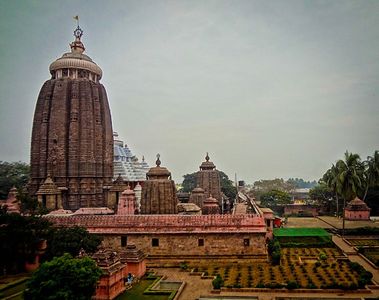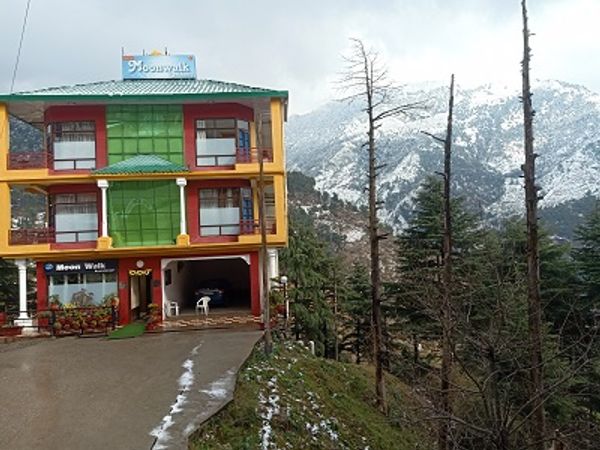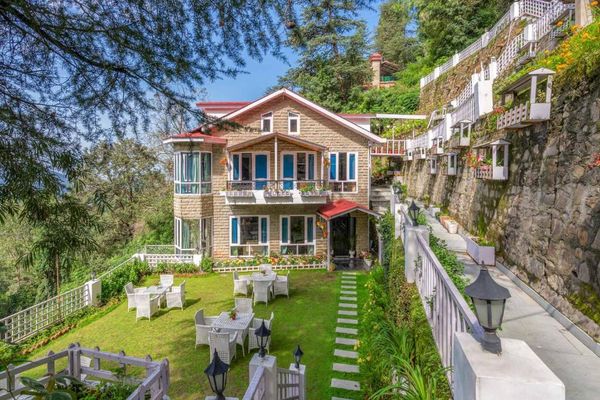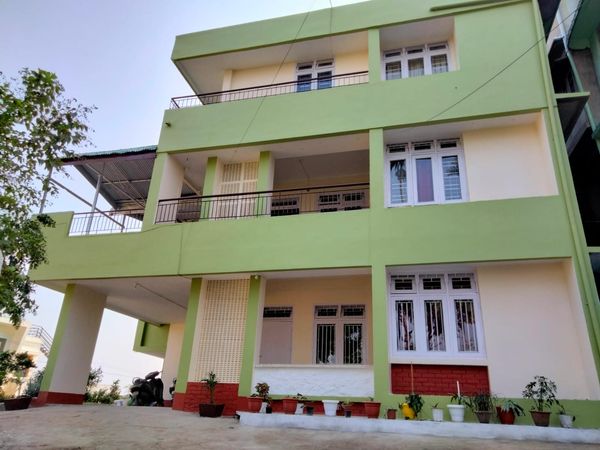Gundicha Temple: A Spiritual Haven in Puri, Odisha
 Vikram Singh
22 Jan, 2025
10 mins read
805
Vikram Singh
22 Jan, 2025
10 mins read
805

Located in the holy city of Puri, Odisha, the Gundicha Temple is a significant and revered religious site in India, particularly for followers of the Hindu faith. This temple holds immense importance in the Jagannath tradition and plays a key role in one of the most famous festivals in India, the Rath Yatra (Chariot Festival). Devotees and visitors alike flock to the Gundicha Temple throughout the year, especially during the Rath Yatra, to pay homage to Lord Jagannath, Lord Balabhadra, and Goddess Subhadra. The temple is not only a place of worship but also a symbol of spiritual unity and devotion.
What is the Gundicha Temple?
The Gundicha Temple is an ancient Hindu temple dedicated to Lord Jagannath and his siblings, Lord Balabhadra and Goddess Subhadra. It is located in Puri, a coastal town in the state of Odisha, which is famous for its centuries-old Jagannath Temple. The Gundicha Temple is believed to be the home of Lord Jagannath during the annual Rath Yatra, an iconic festival where the deities are taken from the main Jagannath Temple to the Gundicha Temple in specially decorated chariots.
While the Gundicha Temple is not as large or as grand as the main Jagannath Temple, its spiritual significance is immense, especially for the residents of Puri and the thousands of pilgrims who visit the city annually. The Gundicha Temple serves as a reminder of the divine love between Lord Jagannath and his devotees, offering a serene and sacred space for spiritual reflection and worship.
Historical Significance of Gundicha Temple Puri
The history of Gundicha Temple Puri is deeply rooted in the traditions of the Jagannath cult and the Rath Yatra festival. According to local beliefs and legends, the temple was originally constructed by King Indradyumna, the founder of the original Jagannath Temple in Puri. The Gundicha Temple is often referred to as the "Garden House of Lord Jagannath", as it is believed that Lord Jagannath used to visit this temple during the monsoon months. The word "Gundicha" means "the house of the Lord" in the local Odia language.
The significance of the Gundicha Temple is most prominent during the Rath Yatra festival, where the deities are ceremonially transported from the Jagannath Temple to the Gundicha Temple in a grand procession. This annual journey, known as the "Pahandi Bije", is a reenactment of Lord Jagannath’s visit to his aunt’s house, with Goddess Gundicha (the deity worshipped at the Gundicha Temple) being considered his aunt.
Legend has it that Lord Jagannath is particularly fond of visiting this temple during the Rath Yatra, and the festival celebrates this visit. The temple has been a place of worship and devotion for centuries, and even today, it remains one of the most important pilgrimage sites in Odisha.
Gundicha Temple Puri: Architecture and Design
The Gundicha Temple Puri Odisha is an impressive example of traditional Odisha temple architecture, also known as the Kalinga style. The temple is not as grand as the main Jagannath Temple but holds its own charm with its simplicity and sacred ambience. It is constructed primarily with sandstone and features intricate carvings that depict scenes from Hindu mythology, including various deities and spiritual motifs.
The temple structure consists of a large sanctum sanctorum (garbhagriha) that houses the idols of Lord Jagannath, Lord Balabhadra, and Goddess Subhadra. The temple also has a spacious pradakshina path (circumambulatory path) that allows devotees to walk around the temple in a sacred manner. The Gundicha Temple's architecture emphasizes the idea of spiritual purity and is designed to facilitate a peaceful and contemplative atmosphere for worshippers.
The temple is surrounded by lush greenery and is believed to have been designed to represent a spiritual garden. It is located in the heart of Puri, and visitors are often drawn to the temple's tranquil setting. The temple also has a kitchen (bhog mandir) where food offerings are prepared as Prasadam for the deities.
Rath Yatra and Its Connection to the Gundicha Temple
The Rath Yatra is one of the most famous festivals in India, and the Gundicha Temple plays a central role in this grand celebration. The Rath Yatra, which takes place annually in the months of June or July, is a celebration of Lord Jagannath’s journey to the Gundicha Temple. The festival is one of the largest religious gatherings in the world, attracting millions of devotees from around the globe.
During the Rath Yatra, the idols of Lord Jagannath, Lord Balabhadra, and Goddess Subhadra are placed on enormous chariots and drawn by thousands of devotees along the streets of Puri. The journey culminates at the Gundicha Temple, where the deities stay for a few days before returning to the Jagannath Temple. This procession is considered an expression of divine love and devotion, and the entire town of Puri is immersed in festive fervor during this time.
The Gundicha Temple Puri is the final destination of the deities during this journey, and devotees believe that by participating in the Rath Yatra, they are not only taking part in a religious tradition but also receiving the blessings of the gods. The deities’ stay at the Gundicha Temple is seen as a moment of spiritual renewal, as it is believed that Lord Jagannath enjoys a peaceful respite in his aunt's house.
The Rituals at Gundicha Temple Puri
The rituals at the Gundicha Temple are similar to those at the Jagannath Temple, and they revolve around the worship of Lord Jagannath and his siblings. The daily rituals include morning arati, prayers, and the offering of bhog (food offerings) to the deities. The Prasadam prepared at the Gundicha Temple is an integral part of the worship, and it is offered to the deities before being distributed to devotees.
The rituals during the Rath Yatra are particularly significant, as they involve elaborate ceremonies to mark the arrival of the deities at the Gundicha Temple. The chariot procession, prayers, and the pulling of the chariots by devotees are part of the vibrant celebrations that take place during the festival.
Additionally, the Gundicha Temple is also a place for other spiritual practices, such as chanting of mantras, meditation, and devotional singing. These activities are part of the larger Jagannath cult, which promotes the principles of devotion, love, and surrender to the Divine.
Visiting Gundicha Temple Puri
The Gundicha Temple Puri is easily accessible to visitors, as it is located in close proximity to the main Jagannath Temple in Puri. The temple is open throughout the year, and devotees can visit the temple at any time to offer their prayers and seek blessings.
The best time to visit the Gundicha Temple is during the Rath Yatra, when the temple is filled with fervour and devotion. However, the temple also remains serene and peaceful during other times of the year, making it a perfect destination for spiritual seekers looking for a quiet place of reflection.
Puri, being a popular pilgrimage destination, is well-connected by road, rail, and air. The Biju Patnaik International Airport in Bhubaneswar, located around 60 kilometers from Puri, is the nearest airport. Puri Railway Station is well-connected to major cities in India, and the town can also be reached by buses and taxis.
Conclusion
The Gundicha Temple Puri is not only an architectural marvel but also a sacred destination for Hindus worldwide. Its connection to Lord Jagannath’s Rath Yatra makes it one of the most important pilgrimage sites in India. Whether you visit during the grand festivities of the Rath Yatra or during the quieter months, the temple offers a peaceful, spiritual atmosphere that draws thousands of devotees and tourists every year. The Gundicha Temple is a testament to the rich cultural and religious traditions of Odisha and remains a pivotal part of the Jagannath heritage.
Written By:
Vikram Singh



Hotels at your convenience
Now choose your stay according to your preference. From finding a place for your dream destination or a mere weekend getaway to business accommodations or brief stay, we have got you covered. Explore hotels as per your mood.





